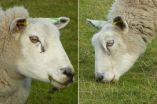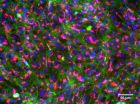(Press-News.org) The common baker's yeast (Saccharomyces cerevisiae) is used to make bread, wine and beer, and is the laboratory workhorse for a substantial proportion of research into molecular and cell biology. It was also the first non-bacterial living thing to have its genome sequenced, back in 1996. However, when the sequence of that genome emerged it appeared that the scientists were seeing double - the organism seemed to have two very different versions of many of its genes. How could this have happened?
Researchers from the Centre for Genomic Regulation (CRG) Barcelona, Spain, writing in the Open Access journal PLOS Biology in a paper publishing 7th August, have now proposed a new theory to explain this phenomenon; the answer involves an ancient mating event between two distinct species, and may have implications for our own genomes.
Since the initial observation, scientists had assumed that about 100 million years ago the entire genome had somehow been duplicated, and that subsequently and although some genes had been lost, the yeast kept two copies of many genes and used them to acquire new functions that helped it to survive.
Such "whole genome duplications" are now known to be surprisingly widespread; for instance, we know that whole genome duplications were important in the early evolution of vertebrates (our own genomes bear the hallmarks of two separate ancient whole genome duplication events) and that it is a very common phenomenon in plants, especially cultivated ones such as wheat.
The CRG scientists Marina Marcet-Houben and Toni Gabaldón used advanced computational methods to study the origins of the whole genome duplication in yeast to gain a more thorough understanding of this phenomenon, which is thought to have played a key role the evolution and adaption of the species. Unexpectedly, they show that the appearance of duplicated genes was not caused by a simple duplication of the whole genome but rather by a mating ("hybridization") event between two different species. Their proposal, which is at odds with the currently most widely accepted theory in the scientific community, provides new insight into this key process during genome evolution and the origins of species.
"When we first saw the results of our study, we thought there had been some kind of mistake," explained Toni Gabaldón, the lead investigator of the study, head of the CRG Comparative Genomics Group and ICREA Research Professor. "Honestly, when the results are not what you expect and contradict what is established, the first thing you do is think that they were affected by some kind of problem. But once all the potential problems have been discarded, you begin to interpret the data objectively, without preconceived ideas, and to do real science. That's when we started to consider the different possible explanations and to work on a new idea,"
The work of Marcet-Houben and Gabaldón revealed that, for yeast, hybridization was indeed behind the duplication of some genes. The researchers analyzed genomic data with computational tool, based on cutting-edge computational methods, and designed by the Gabaldón group, to study the yeast family tree. This tool allowed the researchers to reconstruct gene duplications and to determine what happened in evolutionary time, making it a computational equivalent of carbon-14 dating for fossils.
To their surprise, they found that the age of some duplicated genes seemed to be much greater than that predicted by the theory for the whole genome duplication event. Rather than supporting a genome duplication event at the time when yeast evolved to have twice the number of chromosomes, their data indicated that the duplicated genes had begun to diverge long before. This result suggested the possibility of hybridization between species. In this case, the genes that have been duplicated still differ from each other, so that their divergence preceded the duplication of the chromosome.
Gabaldón added, "It's one of those magical moments of research when, once you open your mind enough, you can surrender to the evidence in the data and discard what you had considered as a proven fact to adopt an entirely new paradigm, no matter how implausible it seems at first. Afterwards you reel in your new paradigm and see that it also explains other independent observations. Scientifically it has been a challenging and rewarding experience. "
The hybridization hypothesis has strong implications on how we interpret the origin and evolution of duplicated genomes. For instance, we no longer need to imagine that massive and rapid changes are necessary to generate new functions from duplicated genome regions, since hybridization combines the properties of the two parental lines from day one and opens the door to new ecological and evolutionary opportunities.
Being able to "look" at 100 million-year-old genomes will now allow us to deepen our knowledge about genomes as well as about the evolutionary mechanisms that lead to diversifying and acquiring new function. This challenging and innovative work will have major implications on how we interpret the functional and evolutionary consequences of genome duplication. It also highlights the importance of basic research for understanding genomes, evolution and diversity.
INFORMATION:
Please mention PLOS Biology as the source for this article and include the links below in your coverage to take readers to the online, open access articles.
All works published in PLOS Biology are open access, which means that everything is immediately and freely available. Use this URL in your coverage to provide readers access to the paper upon publication:
http://www.plosbiology.org/article/info:doi/10.1371/journal.pbio.1002220
Contact: Laia Cendrós
Press Office, Centre for Genomic Regulation (CRG)
Email: laia.cendros@crg.eu
Ph. +34 93 316 0237
Mob. +34 607 611 798
Citation: Marcet-Houben M, Gabaldón T (2015) Beyond the Whole-Genome Duplication: Phylogenetic Evidence for an Ancient Interspecies Hybridization in the Baker's Yeast Lineage. PLoS Biol 13(8): e1002220. doi:10.1371/journal.pbio.1002220
Funding: TG group research is funded in part by a grant from the Spanish ministry of Economy and Competitiveness (BIO2012-37161), which includes FEDER structural funds, a grant from the Qatar National Research Fund (NPRP 5-298-3-086), and a grant from the European Research Council under the European Union's Seventh Framework Programme (FP/2007-2013) / ERC (Grant Agreement n. ERC-2012-StG-310325). The funders had no role in study design, data collection and analysis, decision to publish, or preparation of the manuscript.
Competing Interests: The authors have declared that no competing interests exist.
Berkeley -- While the eyes may be a window into one's soul, new research led by scientists at the University of California, Berkeley, suggests that the pupils could also reveal whether one is a hunter or hunted.
An analysis of 214 species of land animals shows that a creature's ecological niche is a strong predictor of pupil shape. Species with pupils that are vertical slits are more likely to be ambush predators that are active both day and night. In contrast, those with horizontally elongated pupils are extremely likely to be plant-eating prey species with eyes on ...
This news release is available in French and German.
Every year, more than a million fish are used for toxicity testing and scientific research in the EU alone, and around 400 fish are needed for a single fish early-life stage test. Such toxicity tests are often required by regulatory authorities for new chemical substances, as fish are particularly sensitive to contaminants in water at early developmental stages. However, the increasing use of experimental animals is ethically questionable. In addition, conventional tests are complex, expensive and take ...
Coral Gables, FL (August 7, 2015)--Two new studies show that the tone of a candidate's voice can influence whether he or she wins office.
"Our analyses of both real-life elections and data from experiments show that candidates with lower-pitched voices are generally more successful at the polls," explains Casey Klofstad, associate professor of political science at the University of Miami College of Arts and Sciences, who is corresponding author on both studies.
The first study, published online in Political Psychology, shows that candidates who ran in the 2012 U.S. ...
CRG researchers have proposed a new theory to explain the origin of whole genome duplication at the beginning of the yeast lineage. Yeasts are single-celled fungi that originated over 100 million years ago. The ability of these organisms to ferment carbohydrates is widely used for food and drink fermentation. Yeasts are also one of the most commonly used model organisms in research. For example, the yeast Saccharomyces cerevisiae, which is used to make bread, wine and beer, was the first eukaryotic organism to be sequenced (in 1996) and is a key model organism for studying ...
Medulloblastoma, the most commonly occurring malignant brain tumor in children, can be classified into four subgroups--each with a different risk profile requiring subgroup-specific therapy. Currently, subgroup determination is done after surgical removal of the tumor. Investigators at Children's Hospital Los Angeles have now discovered that these subgroups can be determined non-invasively, using magnetic resonance spectroscopy (MRS). The paper will be published online by the journal Neuro-Oncology (Oxford Press) on August 7.
"By identification of the tumor subgroup ...
TORONTO - Hearing loss in adults is under treated despite evidence that hearing aid technology can significantly lessen depression and anxiety and improve cognitive functioning, according to a presentation at the American Psychological Association's 123rd Annual Convention.
"Many hard of hearing people battle silently with their invisible hearing difficulties, straining to stay connected to the world around them, reluctant to seek help," said David Myers, PhD, a psychology professor and textbook writer at Hope College in Michigan who lives with hearing loss.
In a ...
Philadelphia - A large randomized clinical trial of an emergency department (ED)-based program aimed at reducing incidents of excessive drinking and partner violence in women did not result in significant improvements in either risk factor, according to a new study from researchers at the Perelman School of Medicine at the University of Pennsylvania. Contrary to previous studies which found brief interventions in the ED setting to be effective for reducing alcohol consumption to safe levels and preventing subsequent injury among patients with hazardous drinking, the new ...
Capture and convert--this is the motto of carbon dioxide reduction, a process that stops the greenhouse gas before it escapes from chimneys and power plants into the atmosphere and instead turns it into a useful product.
One possible end product is methanol, a liquid fuel and the focus of a recent study conducted at the U.S. Department of Energy's (DOE) Argonne National Laboratory. The chemical reactions that make methanol from carbon dioxide rely on a catalyst to speed up the conversion, and Argonne scientists identified a new material that could fill this role. With ...
For years chemotherapy has been one of most common methods of treating cancer, but it comes with the substantial drawback of effecting healthy cells in the same way that it effects cancerous cells. This means that a subject of chemotherapy can experience great pain and sickness as a side effect of the potentially lifesaving treatment. A solution to this problem is targeted therapy, or the use of drugs, which more specifically targets cancer cells while ignoring nearby healthy cells. Targeted therapy is dependent on drugs which are tailored to inhibited cancer cell growth, ...
A new test developed by UBC researchers allows physicians to measure the effects of gene silencing therapy in Huntington's disease and will support the first human clinical trial of a drug that targets the genetic cause of the disease.
The gene silencing therapy being tested by UBC researchers aims to reduce the levels of a toxic protein in the brain that causes Huntington's disease.
The test was developed by Amber Southwell, Michael Hayden, and Blair Leavitt of UBC's Centre for Molecular Medicine and Therapeutics and the Centre for Huntington Disease in collaboration ...


